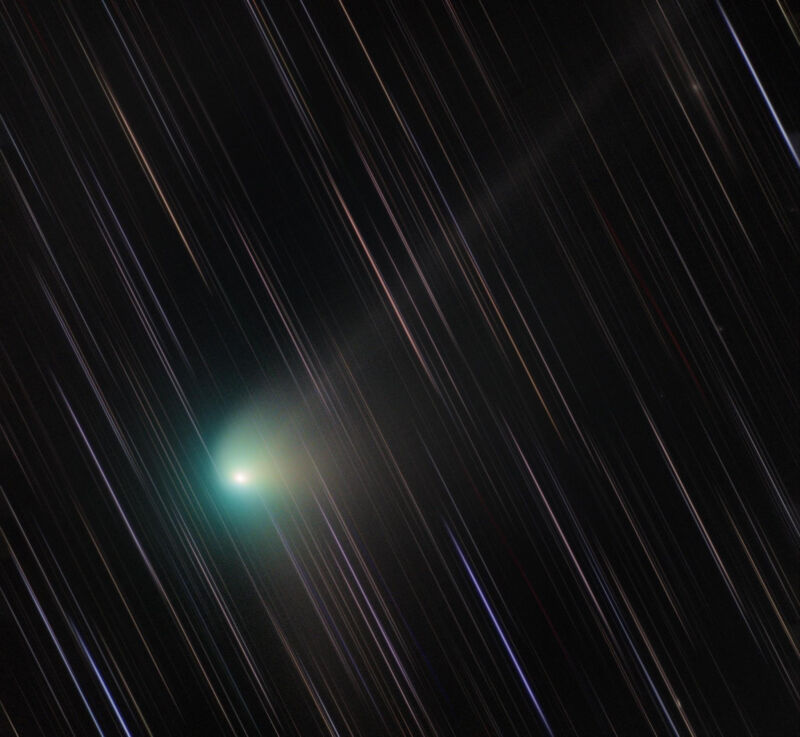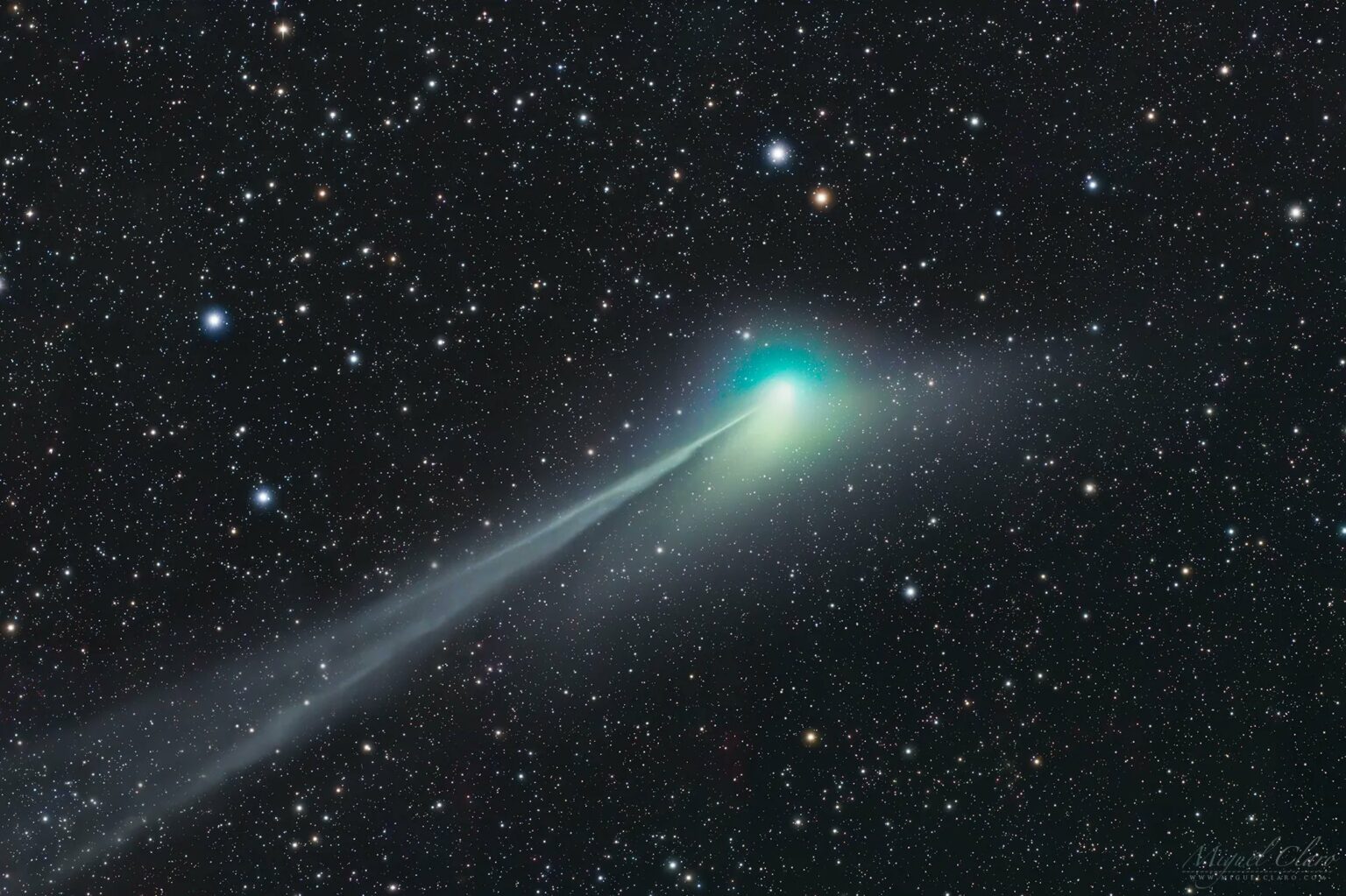
Good morning. It is October 26, and today's image showcases a comet that made its closest approach to Earth on February 1 of this year. The comet has an unwieldy name, Comet C/2022 E3 (ZTF). But this tells us a lot about it, actually. The "C" means that it is non-periodic, meaning that it originated in the Oort cloud that lies at the edge of our Solar System.
We can also discern that the comet was discovered in 2022, and was the third comet discovered during the first half of March (E3). Finally, the ZTF refers to its discovery by the Zwicky Transient Facility, where a 1.2-meter telescope is used to survey the night sky for just such objects.
Maarten Butter captured this photo from his backyard in the city of Apeldoorn, The Netherlands. He used a Sky-Watcher Evostar 72ED DS-Pro telescope. The distinctive lines in this photo are stars. "Typically in astrophotography, the aim is to track the stars for those crisp, sharp captures," he told me. "However, when a comet is your subject, its unique movement means you're faced with a choice in image stacking. You can either align with the comet, letting the stars fade, or align on the stars, which then blurs the comet. My goal was to highlight the comet's journey, so I aligned with it, allowing the stars to create trailing patterns."
One other beautiful thing about this photo is that this technique of letting the stars fade accentuates their different colours. And they do come in all manner of different colours.
As for Comet C/2022 E3 (ZTF), we will never see it again in this lifetime or the next. It is possibly bound for the Oort cloud not to return for millions of years or, more likely, will follow a parabolic arc and entirely leave our Solar System. Fare thee well, traveler.
Source: Maarten Butter.



3175x175(CURRENT).thumb.jpg.b05acc060982b36f5891ba728e6d953c.jpg)
Recommended Comments
There are no comments to display.
Join the conversation
You can post now and register later. If you have an account, sign in now to post with your account.
Note: Your post will require moderator approval before it will be visible.